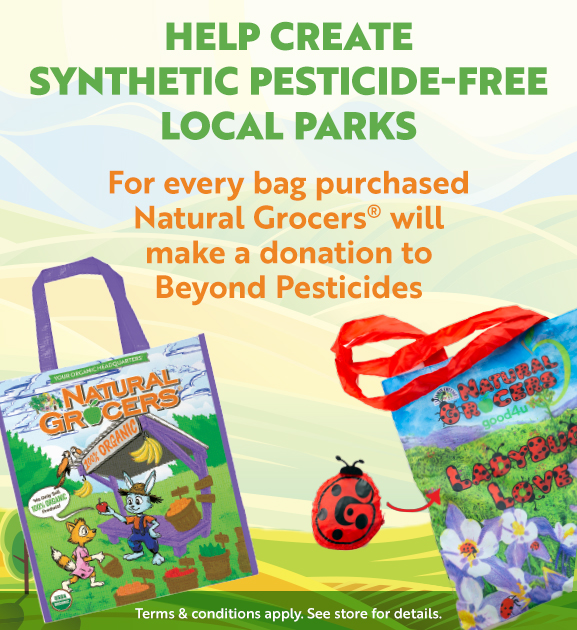20
Sep
Popular Pyrethroid Insecticides, Already Linked to Rheumatoid Arthritis, Associated with Osteoarthritis
(Beyond Pesticides, September 20, 2023) Higher concentrations of a pyrethroid metabolite (3-PBA) in the body have an association with increased osteoarthritis (OA) risk among US adults, according to a study published in BMC Public Health. Regardless of analysis sensitivity and population subgroup (e.g., sex, socioeconomic status, etc.), the association between pyrethroid exposure and OA remains. Osteoarthritis is a degenerative joint disease resulting from the degradation (breakdown) of joint cartilage and underlying bone. This disease affects 1 in 7 U.S. adults and is the fourth leading cause of disability in the U.S. Unfortunately, OA is one of the most recently attributed pesticide-induced diseases associated with this dangerous class of chemical insecticidesâharm to individual Americans that the U.S. Environmental Protection Agency (EPA) is not considering when it registers pesticides.
To remedy the significant deficiencies in EPAâs reviews and protect residents from chronic disease, more and more communities are transitioning to safer, organic pest management practices that do not require pyrethroids and other toxic synthetic pesticides. Thus, this study and others like it highlight the need for increased monitorization of pyrethroid exposure among the general population.
Using data from the 1999â2002 and 2007â2014 National Health and Nutrition Examination Survey (NHANES), this study explores the relationship between pyrethroid exposure and osteoarthritis. NHANES is a long-running monitoring program that began in the early 1960s and has since become a continuous program focused on American health and nutrition measurements. The researchers gathered urine samples from the participants, with 650 out of the 6,523 participants having OA, and examined the samples for levels of 3-phenoxybenzoic acid (3-PBA), the primary metabolite of pyrethroids. Multivariable logistic regression models allowed researchers to investigate the association between pyrethroid exposure and OA. The results demonstrate that the higher the levels of urinary 3-PBA, the greater the odds of OA in U.S. adults, highlighting the importance of routinely monitoring pyrethroid exposure among the general population.
Synthetic pyrethroids are one of the most frequently detected chemicals in Americansâ bodies. Prior NHANES data shows that 78 percent of adults and 79 percent of children have some level of 3-PBA in their urine. Avoiding pyrethroid exposure can be difficult as synthetic pyrethroids are increasingly the first choice for mosquito management in many communities nationwide. These chemicals have increasingly replaced organophosphate insecticides in homes, food production, local parks, and playing fields. Often characterized by the chemical industry as âsafe as chrysanthemum flowers,â they are less acutely toxic than organophosphates. Still, it is increasingly evident that they pose insidious, chronic risks to health that are no less concerning than the hazardous pesticides that came before them. Beyond Pesticides urges government agencies to avoid using these insecticides, primarily because of the risk to young children, pregnant mothers, and communities of color already exposed to disproportionate pesticide use. At the same time, a 2021 study finds that disease-carrying mosquitoes are found at higher rates in lower socioeconomic areas, and a study published earlier 2022 finds that childrenâs exposure to pyrethroid mosquito control operations is associated with significant increases in the risk of allergies and respiratory diseases. Much of this exposure can occur from a diet laden with these toxic pesticides. However, those who switch from a conventional to an organic diet can significantly reduce the amount of pesticide in their body, as evidenced by drastic drops in urinary 3-PBA after going organic. In fact, children who eat organic are more likely to score higher on cognitive tests than those who consistently eat conventional, pesticide-contaminated food. However, for many low-income and Black, Indigenous, and People of Color (BIPOC) communities around the country, eating organic is not likely to limit all exposures. In public housing, synthetic pyrethroids are often used as insect sprays for common household pests that would not have been a problem with proper building maintenance and upkeep. Research finds that, after sprayed, synthetic pyrethroids can remain on surfaces for up to a year, representing a continuous source of re-exposure. This data tells a story of low-income communities and children being sprayed more often and placed at greater risk due to a lack of investment in maintenance and infrastructure that would prevent pest problems before they begin.
This study is one of the first to identify the association between chronic exposure to pyrethroids and OA. The study suggests pyrethroidsâ adverse impact on thyroid hormones plays a significant role in OA development, affecting cell secretions of cartilage and enzyme activity in joints. Additionally, a study within the last year by the same researchers found that pyrethroids are also associated with rheumatoid arthritis (RA). This autoimmune disease causes systemic inflammation throughout the body, progressively damaging an individualâs joints. Thus, exposure to pyrethroids can induce co-occurring impacts on the skeletal structure through autoimmune disruption and degenerative disease, making it possible to have both OA and RA. Like past studies, this study suggests possible sex-specific effects from pyrethroid exposure, especially among men. However, this study shows pyrethroids and their metabolites may have anti-estrogenic activity in humans, further implicating potential endocrine (hormone) disruption from exposure. The anti-estrogenic activity can lead to type II collagen degradation and structural changes in the joints of exposed females.
With many diseases in the U.S. associated with pesticide exposure, reducing pesticide use is critical to safeguarding public health and addressing cost burdens for local communities. Policies should enforce stricter pesticide regulations and increase research on the long-term impacts of pesticide exposure. Beyond Pesticides tracks the most recent studies on pesticide exposure through our Pesticide-Induced Diseases Database (PIDD) and Daily News Blog. The adverse health effects of pesticide exposure and the aggregate risk of pesticides showcase a need for more precise research surrounding occupational and residential pesticide exposure to make complete determinations and the importance of fully recognizing uncertainty in precautionary regulatory decisions. Existing information, including this study, supports the clear need for a strategic shift away from pesticide dependency. For more information on pesticide-related illnesses, see PIDD pages on immune system disorders, including arthritis.
Arthritis disease has no cure, but preventive practices like organics can eliminate exposure to toxic arthritis-inducing pesticides. Organic agriculture represents a safer, healthier approach to crop production that does not necessitate pesticide use. Beyond Pesticides encourages farmers to embrace regenerative, organic practices. A compliment to buying organic is contacting various organic farming organizations to learn more about what you can do.Â
All unattributed positions and opinions in this piece are those of Beyond Pesticides.
Source: BMC Public Health
















